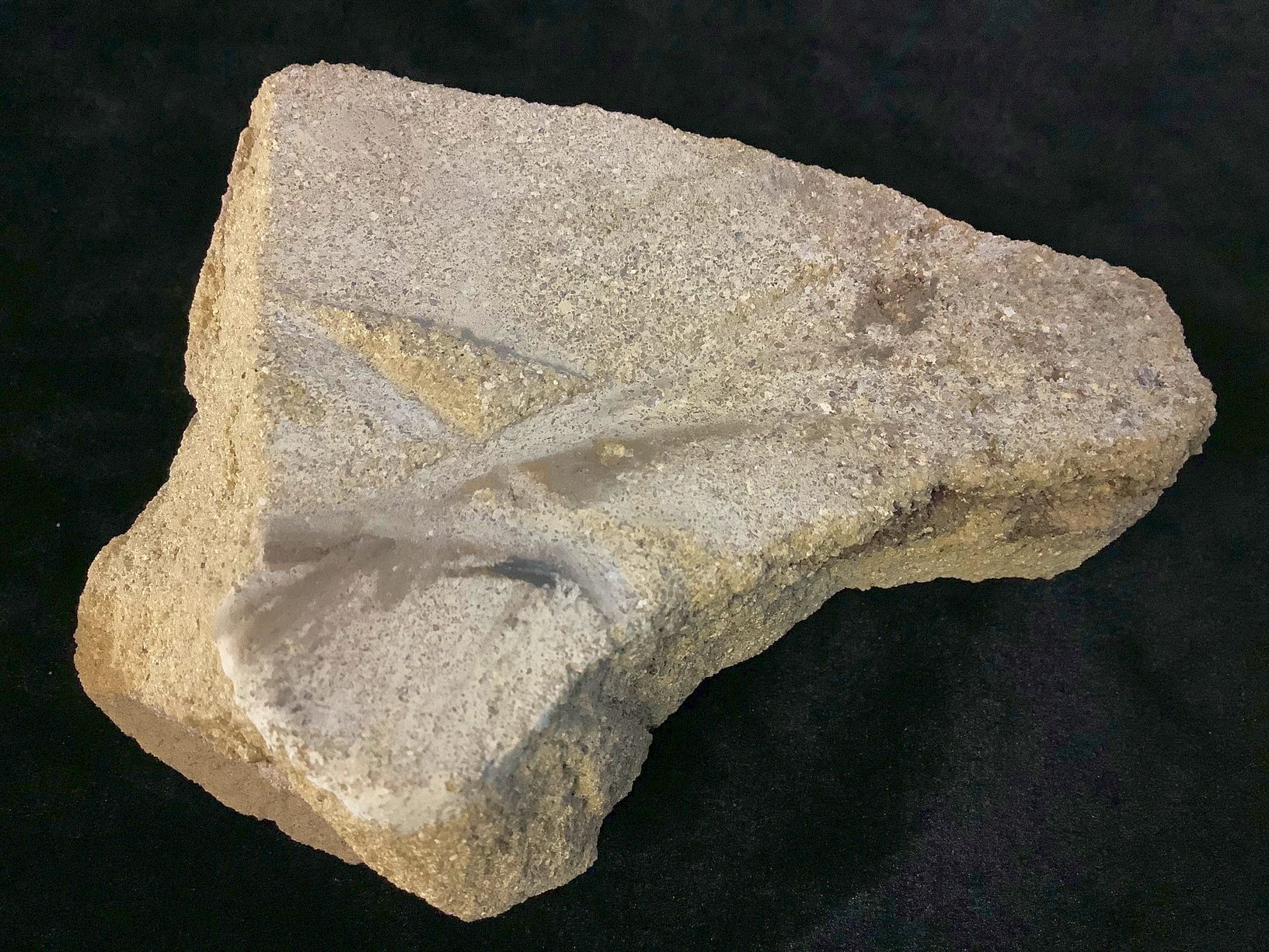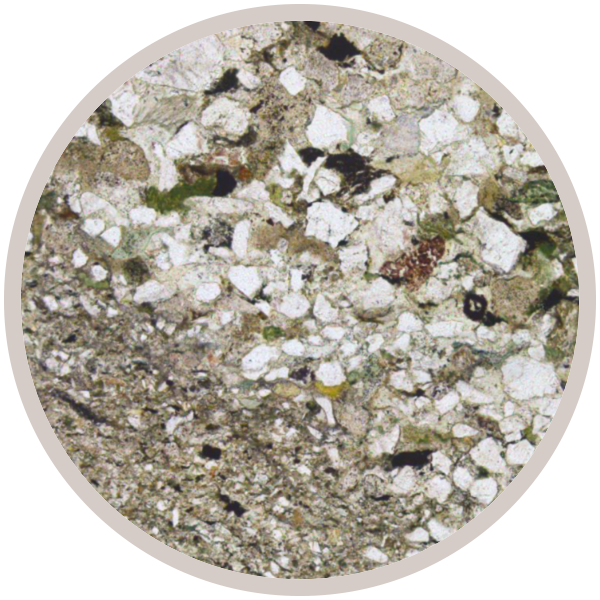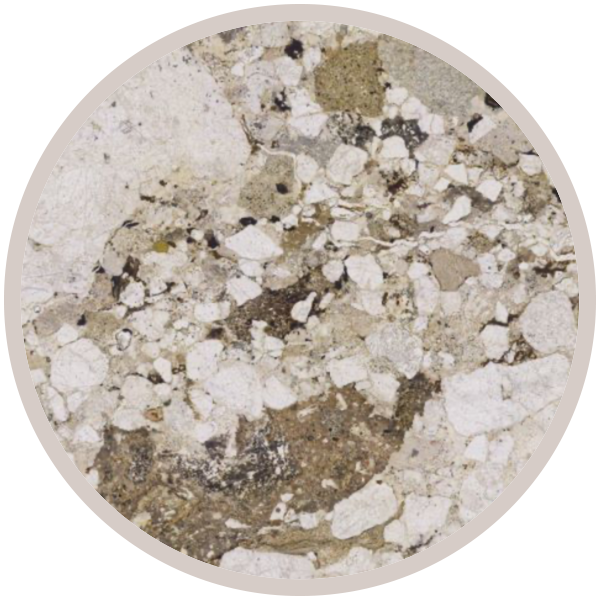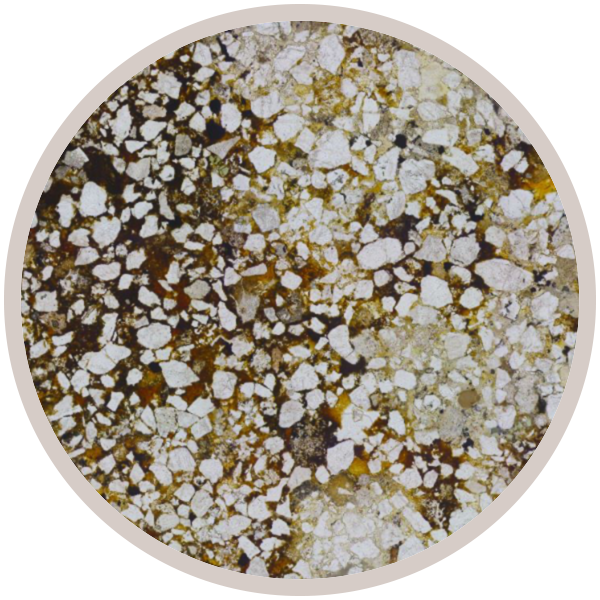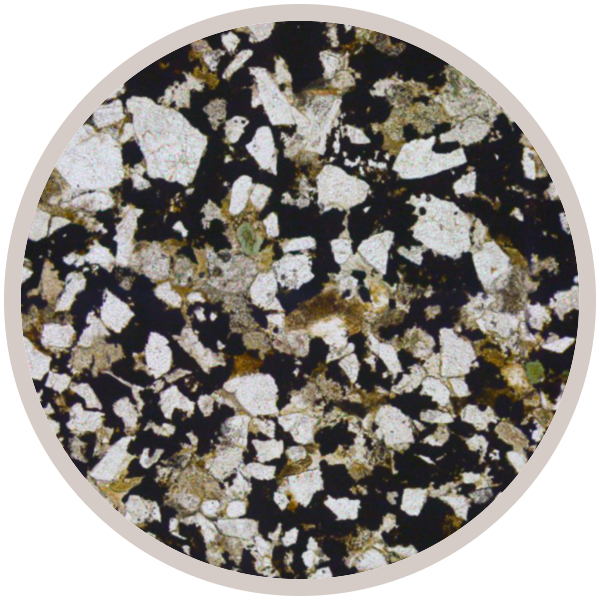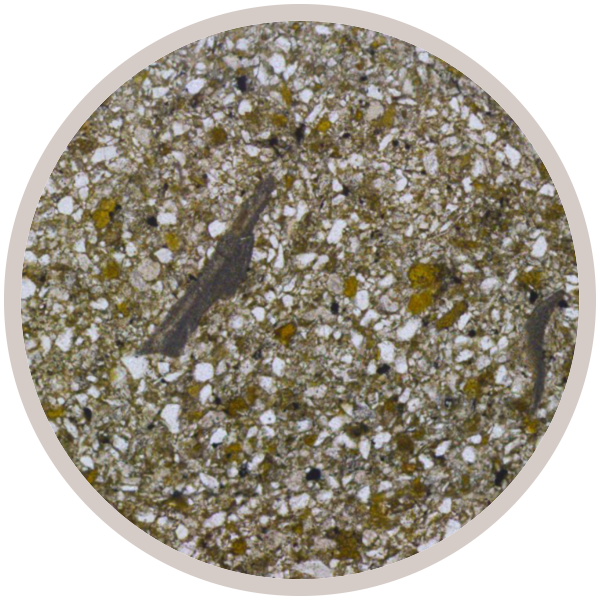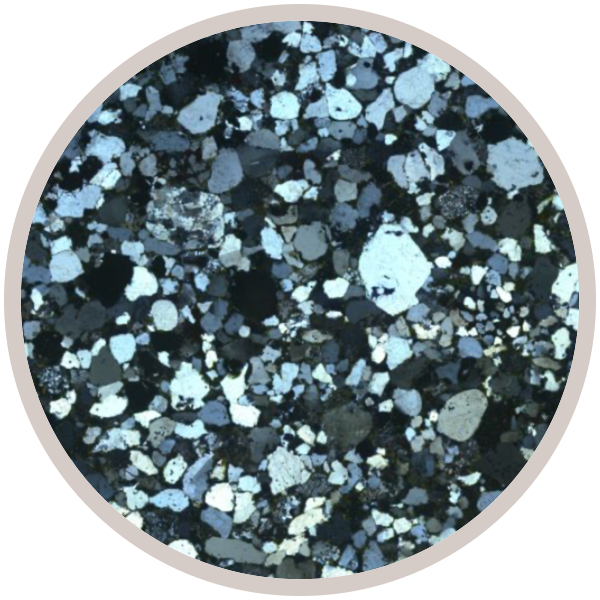
Fact sheet
Beige sandstone with burrows and abundant voids left where fossil brachiopods (Lingula sp.) have dissolved away.
A beige sandstone collected from near Highbridge Road Steps. The exposures show sedimentary bedding as well as features such as roughly vertical burrows. There are also many voids in the rock which have been explained by two contrasting theories. One idea is that the voids were left after fossils of a brachiopod, Lingula sp, were dissolved away. Another idea is that the voids represent gas bubbles formed when the microgabbro magma intruded nearby, heating the water in the unconsolidated sandstones to form vapour. It is possible that both theories are true!
The sandstones were deposited in a low-lying, deltaic environment when the region lay near the equator. Flattened fossilised tree-trunks have been found in Carboniferous rocks close by in Brewin's Cutting, indicating that the area was thickly forested.
In thin section, the rock has a typical fragmentary, detrital texture. Colourless quartz grains are mainly subrounded to subangular, but a few highly rounded grains are also visible. Dusty brownish grains are feldspars, lightly altered to fine clay minerals. Some grains under crossed polars are finely polycrystalline, made up of numerous much smaller grain; these represent grains of other rocks (siltstones or finer sandstones). Rarely, these grains show strained quartz textures that imply they are fragments of metamorphic rocks.
The spaces in between the grains are mainly filled with dull, fuzzy, orange to brown material. This is probably a mixture of clay minerals and iron oxides or hydroxides, which help to cement the rock together. However, there are also clear, isotropic patches that represent voids (pore spaces) in the sandstone. They are mainly infilled with the mounting medium, but look out for circular features within these patches, which are bubbles left where the mounting medium did not fully impregnate the pore space.
This sample was collected as part of the 'Macro to Micro' project.
This Collection showcases the geodiversity of a classic geological site: the Saltwells National Nature Reserve in the West Midlands.
As well as displaying thin section and hand specimen views along with information setting them in the context of their landscapes, we also include perspectives and creative responses to the geological heritage of the sites from the local community.
| Explore the stories of the rock layers at Saltwells and Wren's Nest NNRs, designed by students at King Edward VI School, Stourbridge: |
This Collection was made possible by funding awarded to the 'Macro to Micro' project by the Natural Environment Research Council (NERC) under their 'Growing Roots' scheme.
